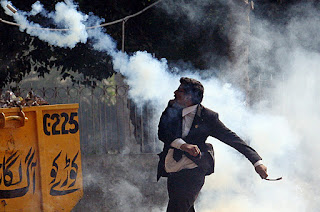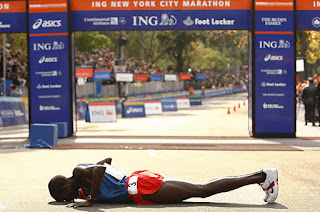1. The man, Han, was killed after being pushed into the subway track and was not strong enough to lift himself up. The photographer was present at the scene and after determining that he would not be able to save the man, he captured photos of the event instead.
2. The photographer said that he took the photo so that the conductor would see his flash and stop.
3. I think that it is important that photos like these should be taken, but not if a life could have potentially been saved.
4. I think that as a photographer, he did what was instinct to him. If he was truly unable to help the man, then photos are sadly more valuable.
5. I think that this photo makes a dynamic cover page, but is extremely disturbing for many people who disagree with this type of journalism.
6. Photojournalists have a passion for capturing moments of life as they happen at the cost of a few deaths. Although this is extremely unsettling, it is their instinct and contribution to the world.
7. I think that a photojournalist should always use their judgement before choosing if they should involve themselves in the situation or take photos. If they could potentially help someone or save a life, photos are not the priority. If a situation is hopeless, photos might as well be taken.
8. Photojournalists should always avoid influencing the events that they photograph. If they were to do this, the event would not be authentic, but posed for a camera.
9. The best response is exactly what Abbasi said. There was no way that he could have save the man, so he helped in the way that he could, which was to take photos.
Monday, December 19, 2016
Monday, December 12, 2016
Final Exam Review
Writing Captions
1.

On October 27th in the upper east side of Philadelphia, James Ramsey escapes his burning apartment complex is order to survive. According to many of the residents, the building had a history of catching fire due to electrical wire.

After winning the New York City Marathon on September 2nd, Kenyan runner kisses the ground to show his gratefulness for his victory. In addition to his win, the runner set a new personal record.
Rules of Photography
1. Rules of Thirds- placing a subject off center, vertically or horizontally
2. Balancing Elements- placing subjects within frame so that they are equal in visual weight
3. Leading Lines- using lines to attract a viewers eye to the subject
4. Repetition-repeating visual elements to create rhythm and unify the elements of the photo
5. Viewpoint- making the photo more dynamic by approaching the subject at multiple angles
6. Background-making the background of the photo simple to draw more attention to the subject
7. Create Depth- amount of distance between photographer and subject. Tools are background and foreground.
8. Framing-placing a subject in a frame in order to focus attention on it
9. Cropping-leaving unimportant details of a photo out of the frame and focusing on one specific aspect of the photo
10.Mergers + Avoiding Them- when a part of the photo clashes with something else in the picture, distracting from the subject. To avoid this, arrange the subject in another way.
1.

On October 27th in the upper east side of Philadelphia, James Ramsey escapes his burning apartment complex is order to survive. According to many of the residents, the building had a history of catching fire due to electrical wire.

After winning the New York City Marathon on September 2nd, Kenyan runner kisses the ground to show his gratefulness for his victory. In addition to his win, the runner set a new personal record.
Rules of Photography
1. Rules of Thirds- placing a subject off center, vertically or horizontally
2. Balancing Elements- placing subjects within frame so that they are equal in visual weight
3. Leading Lines- using lines to attract a viewers eye to the subject
4. Repetition-repeating visual elements to create rhythm and unify the elements of the photo
5. Viewpoint- making the photo more dynamic by approaching the subject at multiple angles
6. Background-making the background of the photo simple to draw more attention to the subject
7. Create Depth- amount of distance between photographer and subject. Tools are background and foreground.
8. Framing-placing a subject in a frame in order to focus attention on it
9. Cropping-leaving unimportant details of a photo out of the frame and focusing on one specific aspect of the photo
10.Mergers + Avoiding Them- when a part of the photo clashes with something else in the picture, distracting from the subject. To avoid this, arrange the subject in another way.
Friday, December 9, 2016
Monday, December 5, 2016
Subscribe to:
Comments (Atom)



